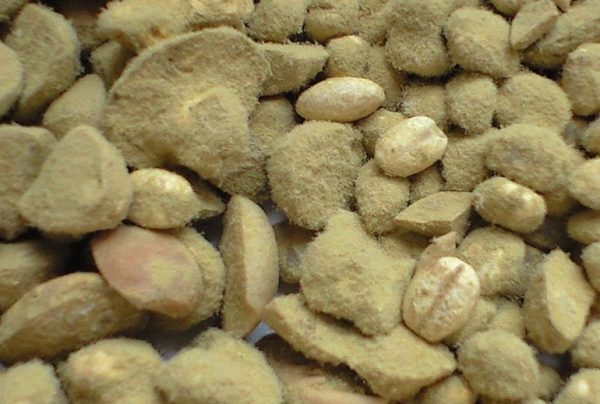
Aflatoxins Mycotoxin
Aflatoxins (AF) are most poisonous toxins. These are produced by specific fungi called Aspergillus. Two species of Asptergillus A. flavus and A. prasiticus that grow in soil , hay, grains, decaying matters are responsible for aflatoxin production. Types of aflatoxins are: B1, B2, G1, M1 and G2. Aflatoxin B1 is considered the most toxic aflatoxin as it metabolizes in liver and produces secondary toxins!
Aspergillus produce aflatoxin in soybean, sunflower, cotton seeds, peanut – all oil seeds.
In crops – paddy, sorgum, corn and wheat
Tree nuts – almond, walnut, pistachio and even in coconut!
These toxins can be present in milk and dairy products. When the dairy animals are fed with Aspergillus infected feed, toxin called Aflatoxin M1 can transfer to milk and other dairy products. Impact of aflatoxin: Consumption of aflatoxin could be life threatening; it could damage liver. These toxins can damage DNA and can cause cancer. Impaired blood coagulation, immunosuppression are other serious threats. Evidences suggest that aflatoxin can cause liver cancer in humans. Mild symptoms of aflatoxin poisoning include – nausea, headache, rashes.
Image credit:
https://commons.wikimedia.org/wiki/File:Shoyukoji.jpg
ウェルワィ, CC BY-SA 3.0 <https://creativecommons.org/licenses/by-sa/3.0>, via Wikimedia Commons
Author: Sumana Rao | Posted on: January 25, 2021
« Ochratoxin A Mycotoxin What are the concerns and effect of Mycotoxins »






















Write a comment